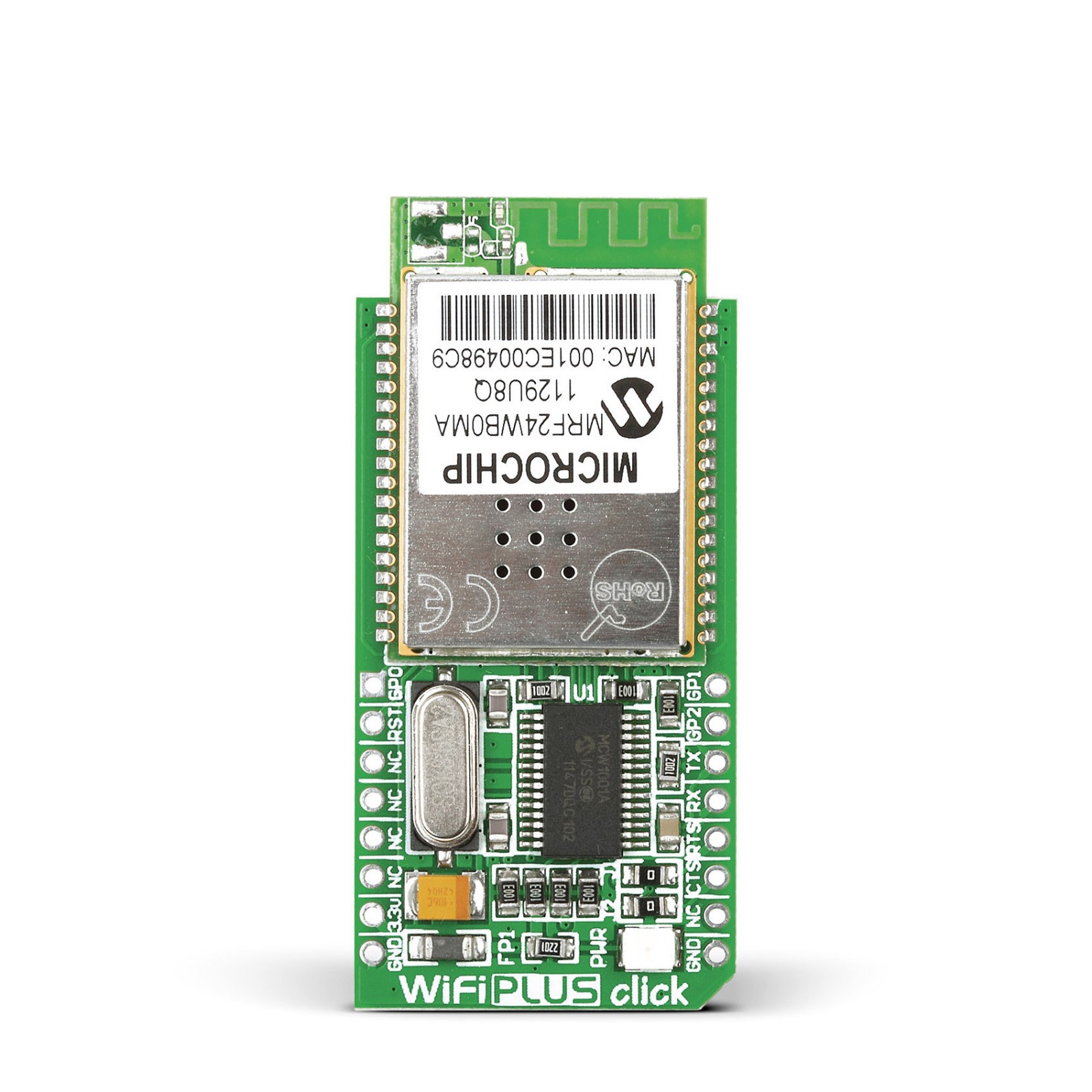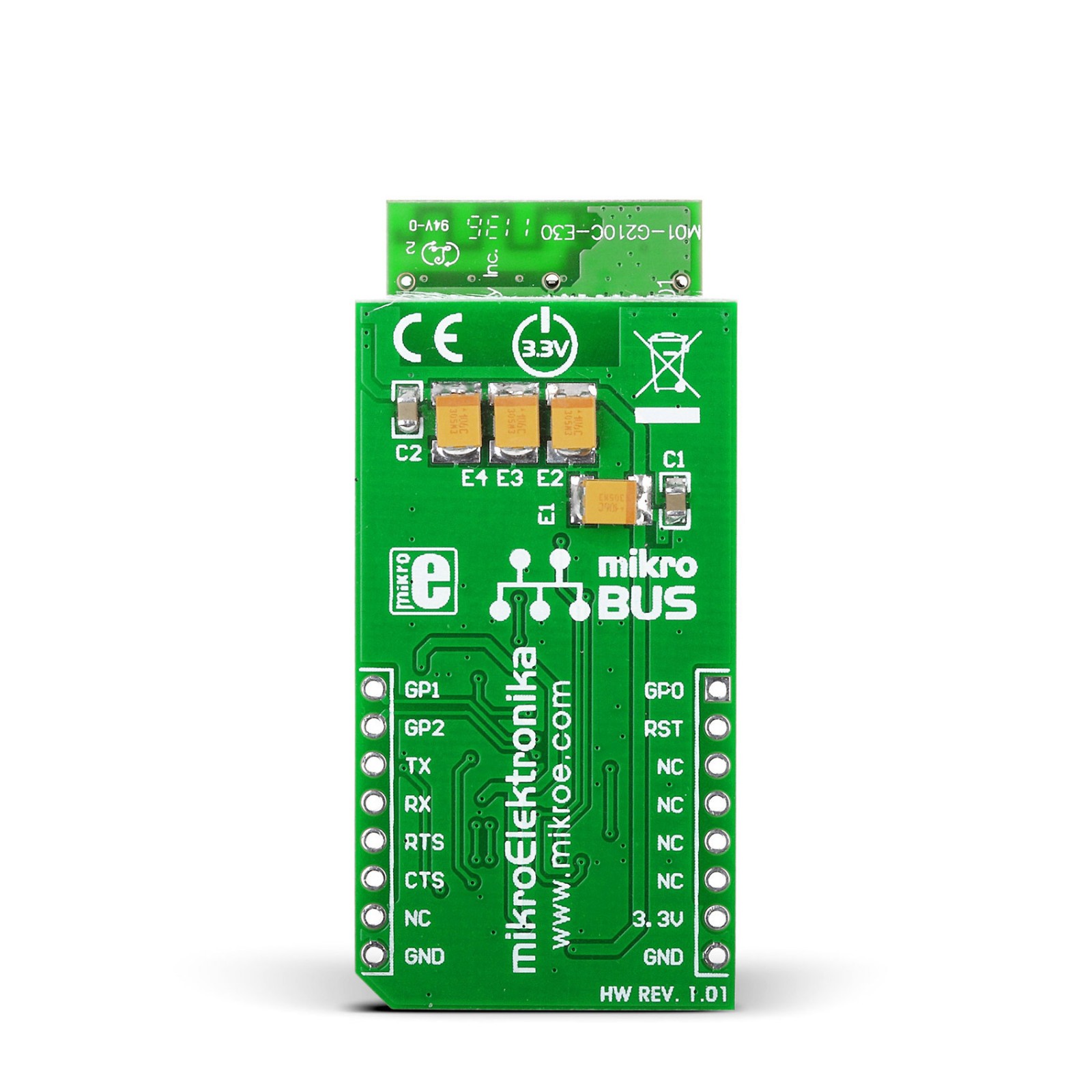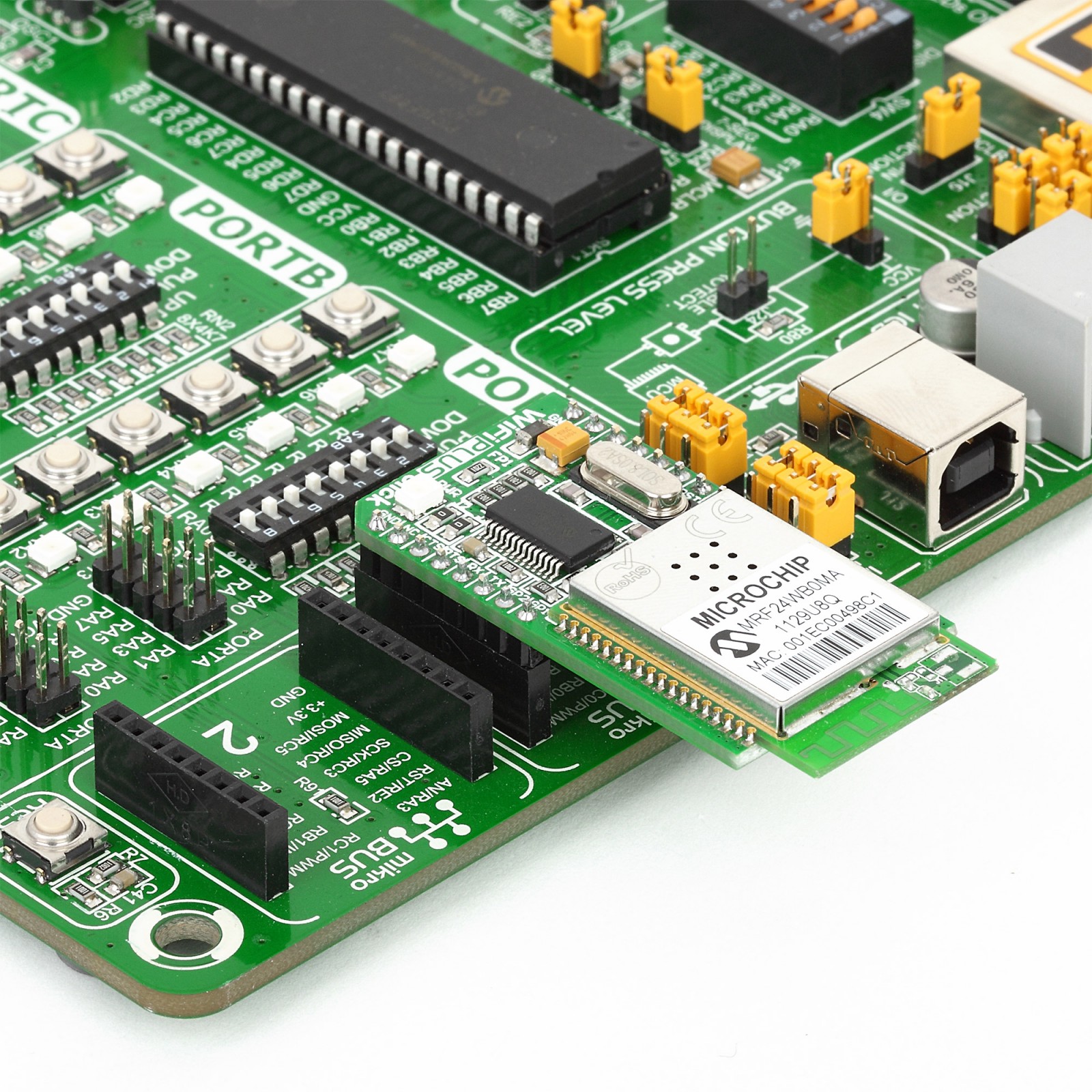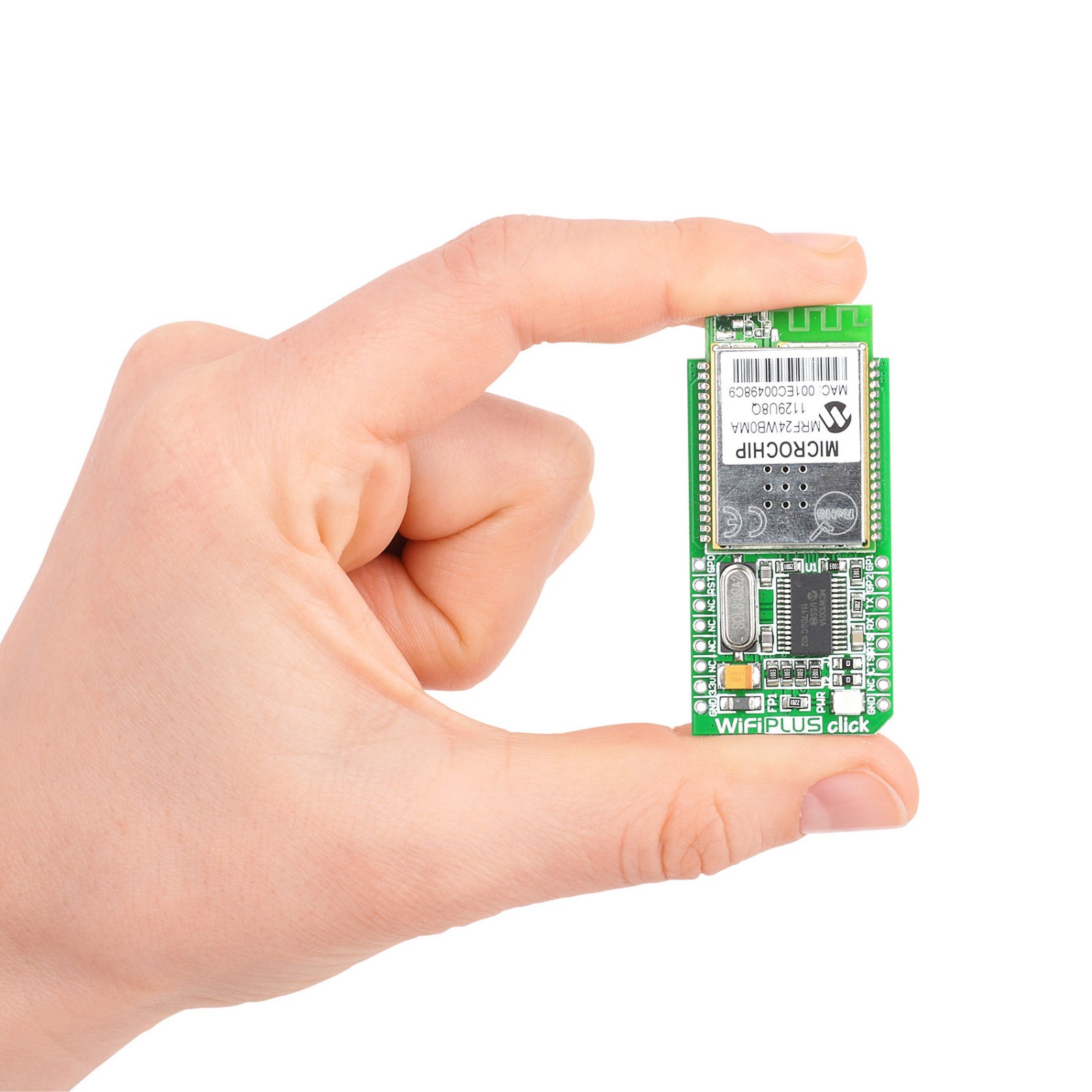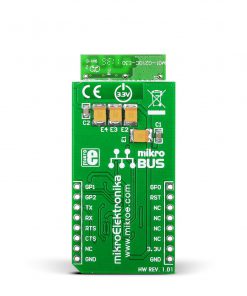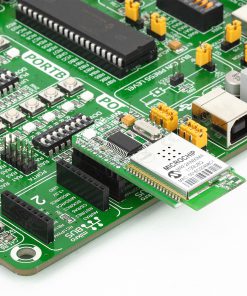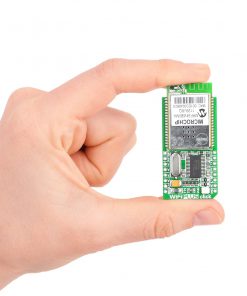WiFi Plus Click
R2,200.00 ex. VAT
WiFi Plus Click is a compact add-on board providing a low-power WiFi solution. This board features the MRF24WB0MA, a 2.4GHz, IEEE standard 802.11b/g/n compliant RF transceiver from Microchip. The MRF24WB0MA comes with an integrated antenna, with a range of up to 400m, and a place for a u.Fl connector. It is characterized by low power consumption and built-in hardware support for AES and TKIP (WEP, WPA, and WPA2 security). WiFi Plus Click also features an MCW1001 companion controller, also from Microchip, with an onboard TCP/IP stack and 802.11 connection manager, which in combination with MRF24WB0MA, results in support for IEEE Standard 802.11 and IP services. This Click board™ is suitable for highly integrated and cost-effective applications, industrial wireless control, smart home applications, utility and smart energy, remote device management, and more.
WiFi Plus Click is supported by a mikroSDK compliant library, which includes functions that simplify software development. This Click board™ comes as a fully tested product, ready to be used on a system equipped with the mikroBUS™ socket.
Stock: Lead-time applicable.
| 5+ | R2,090.00 |
| 10+ | R1,980.00 |
| 15+ | R1,870.00 |
| 20+ | R1,799.60 |

